Festes de la Merce
A Celebration of Barcelona’s Rich Culture and Traditions
2026/09/17 - 2026/09/23
As summer bids farewell to Barcelona, the city transforms into a vibrant tapestry of color, sound, and movement during the Festes de la Mercè. Every year, this festival dedicated to the city's patron saint, Our Lady of Mercy, turns Barcelona into a dynamic stage for five days in late September. From the Gothic Quarter to the beaches of Barceloneta, over 500 events, including human tower building (Castells) and traditional Catalan dances (Sardanes), take place, allowing locals and visitors alike to immerse themselves in Catalan tradition, contemporary art, and an irresistible atmosphere of joy.
Main Attractions
Correfoc (Fire Run)
As night falls on Via Laietana in Barcelona's old city, the air becomes tense with anticipation. Suddenly, a fire-breathing dragon emerges from the darkness, accompanied by devils swinging rakes with sparks flying from their tips, filling the air with a thunderous roar. The Correfoc has begun, transforming the streets into a mesmerizing inferno of sparks and smoke. Brave participants, dressed in protective clothing, dance under the shower of sparks, their faces illuminated in golden light. The rhythmic beat of drums and the hiss of fireworks provide a primal soundscape to this thrilling spectacle of fire and folklore.
Castellers (Human Towers)
In Plaça Sant Jaume, a hush falls over the crowd as the Castellers begin to form. Dressed in traditional white trousers and colorful shirts, they interlock their arms and legs to create a human base. As each layer is added, the tower grows taller, becoming a living monument of strength and balance. The tension reaches its peak as a young child, known as the "Enxaneta," climbs to the top and raises their hand in a victory salute. The square erupts in cheers, and the applause seems to shake the stones of the surrounding Gothic architecture.
Gegants i Capgrossos (Giants and Big Heads Parade)
As the Gegants i Capgrossos parade begins in the narrow streets of the old city, lively melodies of flutes and drums fill the air. Giant puppets representing kings, queens, and nobles, some over four meters tall, swirl and dance among the crowd. Their elaborate costumes of velvet, silk, and gold embroidery shimmer in the Mediterranean sunlight. These towering figures, weighing up to 30 kilograms each, gracefully navigate the ancient alleys. Children shout with joy, and adults gaze in awe, as history comes alive in a whimsical procession.
Piromusical
A combination of "Piro" (fireworks) and "Musical" (music), this fireworks show is synchronized to music. As the festival reaches its climax, thousands gather at the foot of Montjuïc to witness the breathtaking Piromusical. The night sky becomes a canvas for a dazzling symphony of light, color, and sound. From classical masterpieces to contemporary hits, fireworks are launched perfectly in sync with the music. The nearby Magic Fountain adds to the spectacle, its illuminated waters dancing in harmony with the fireworks. The scent of gunpowder and the collective gasps of the captivated audience fill the air, creating a finale that encapsulates the essence of the Festes de la Mercè.
Culinary Delights
Throughout the festival, the city is enveloped in the enticing aromas of Catalan cuisine. Stalls line the squares, offering traditional delicacies such as crispy "Patatas Bravas" topped with spicy aioli sauce, and "Pa amb Tomàquet," bread rubbed with ripe tomatoes and drizzled with olive oil. The sweet scent of churros coated in cinnamon sugar mingles with the rich aroma of locally produced Cava. As night falls, the sizzle of seafood paella pans and the clink of vermouth glasses enhance the festive evening atmosphere.
Cultural and Historical ackground
The origins of La Mercè date back to 1687, when the Council of Barcelona named Our Lady of Mercy as the patron saint of the city for saving it from a plague of locusts. However, the modern form of the festival was established in 1902, thanks to the efforts of Francesc Cambó, who envisioned a grand celebration to rival the great festivals of Europe.
For the residents of Barcelona, La Mercè is more than just a series of spectacles. It is a living embodiment of Catalan identity, a time when the city's layers of Roman, medieval, and modernist history merge with contemporary culture. The festival serves as a reminder of Barcelona's resilience through centuries of change, war, and political upheaval, a moment when the entire city breathes out, bidding farewell to summer and welcoming the creative energies of autumn.
Participant Voices
"I've been participating in the Festes de la Mercè since I was a child, but this year was special. I watched my daughter take part in the Castellers for the first time, just as I did 30 years ago. As she climbed the human tower, my heart was in my throat. When she raised her hand at the top, I felt a connection with all the generations before us who have kept this tradition alive. It's more than just a spectacle; it's about trust, teamwork, and shared heritage. At that moment, I understood why we call ourselves 'més que un club'—we are more than just a city, we are a family united by these traditions."
"Walking through the Gothic Quarter, I heard drums and saw smoke. Suddenly, I was surrounded by fire-breathing dragons and dancing devils. It was both terrifying and exhilarating! A local explained the meaning of the Correfoc and even lent me a hat and long-sleeved shirt, teaching me how to dance safely under the sparks. By the end of the night, I was covered in soot and smelled of gunpowder, but I felt like I had taken part in one of Barcelona's secret rituals. It was the most thrilling night of my life!"
Fun Facts
- Over 80,000 firecrackers are used in the Correfoc, with more than 500 "devils" and 15 fire-breathing beasts participating.
- The highest human tower ever built during the Festes de la Mercè reached an astonishing 10 levels.
- The festival mascot, Geganta Mercè, is a giant figure representing the patron saint, standing 3.5 meters tall and weighing 58 kilograms.
Festival Dates
La Mercè is usually held around September 24th, the feast day of Our Lady of Mercy.
The event schedule is subject to change. Please check the official website for the most up-to-date information.
Media
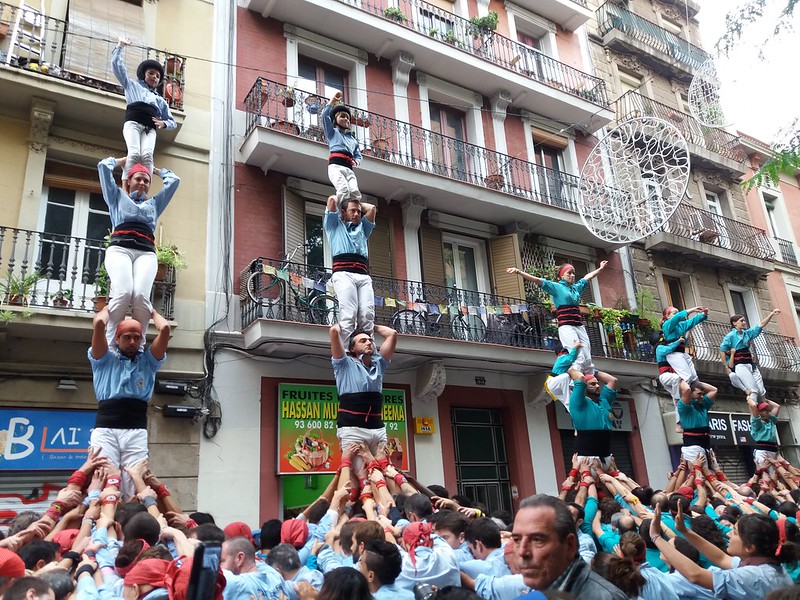
photo by Castellers d'Esplugues
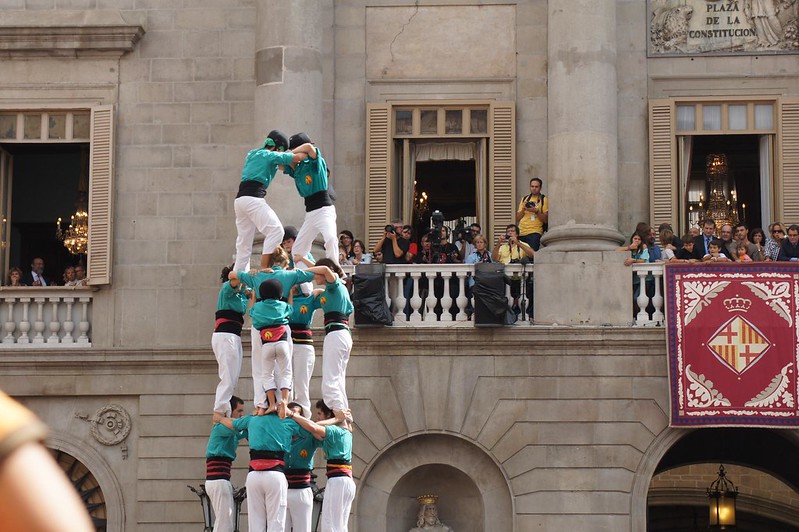
photo by marimbajlamesa
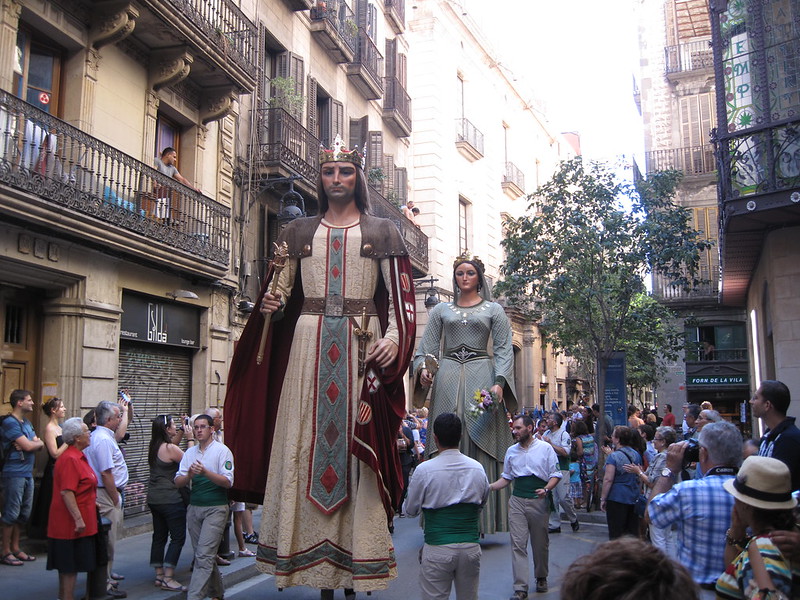
photo by Somewhere in the world today...
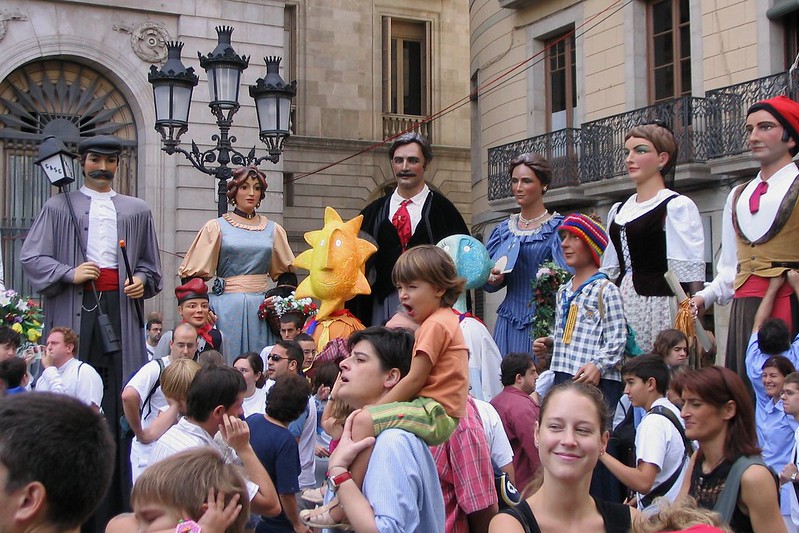
photo by Rob Oo
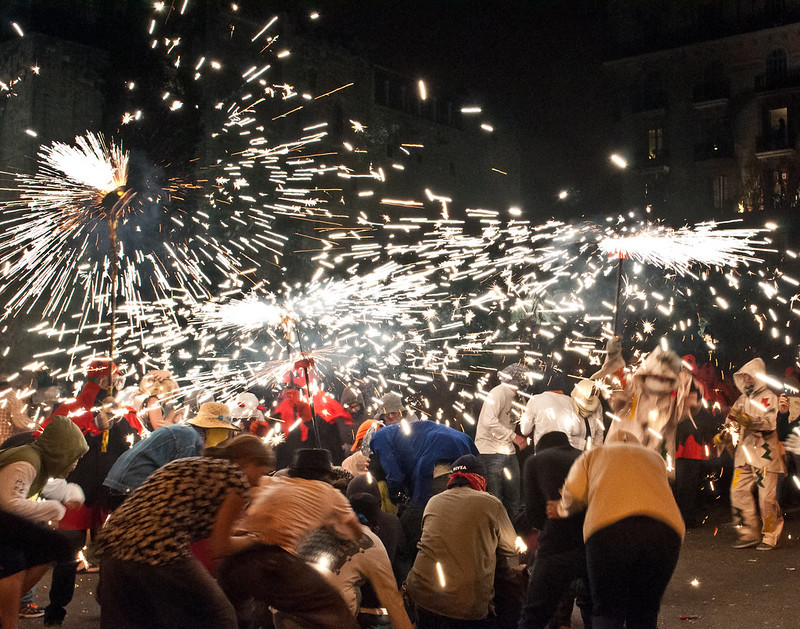
photo by Davidlohr Bueso
Information
| Name | Festes de la Merce |
| Country | Spain |
| Area | Catalonia, Barcelona |
| Date | 2026/09/17 - 2026/09/23 |
| Link |
Upcoming Festivals
Whirling Dervishes Festival Turkey
A Mesmerizing Dance of Divine Love
2025/12/06Mevlana Celaleddin Rumi Commemoration Ceremony ( Şeb-i Arus ) Turkey
A Whirling Journey to Divine Love
2025/12/10Dia de la Virgen de Guadalupe Mexico
A Festival Weaving Faith, Fervor, and Mexican Identity
2025/12/11L'Escalade Switzerland
Geneva’s Grand Winter Festival of Courage, Chocolate, and Community
2025/12/12Umkhosi Wokweshwama South Africa
The Zulu First Fruits Festival—A Sacred Celebration of Land, Ancestors, and Renewal
2025/12/12Lucia Festival (St. Lucia's Day) Sweden
A Festival of Light Illuminating the Nordic Darkness
2025/12/15Las Posadas Mexico
The Luminous Quest for Sacred Shelter
2025/12/22Noche de Rabanos (Night of the Radishes) Mexico
A celebration blending art, farming heritage, and cultural traditions
2025/12/23Chant of the Sybil on Majorca Spain
A Medieval Prophecy Echoes Through Majorcan Christmas
2025/12/23‘Hatajo de Negritos’ and the ‘Hatajo de Pallitas’ Peru
A Christmas Festival of Rhythm, Faith, and Afro-Andean Heritage in Peru’s Ica Region